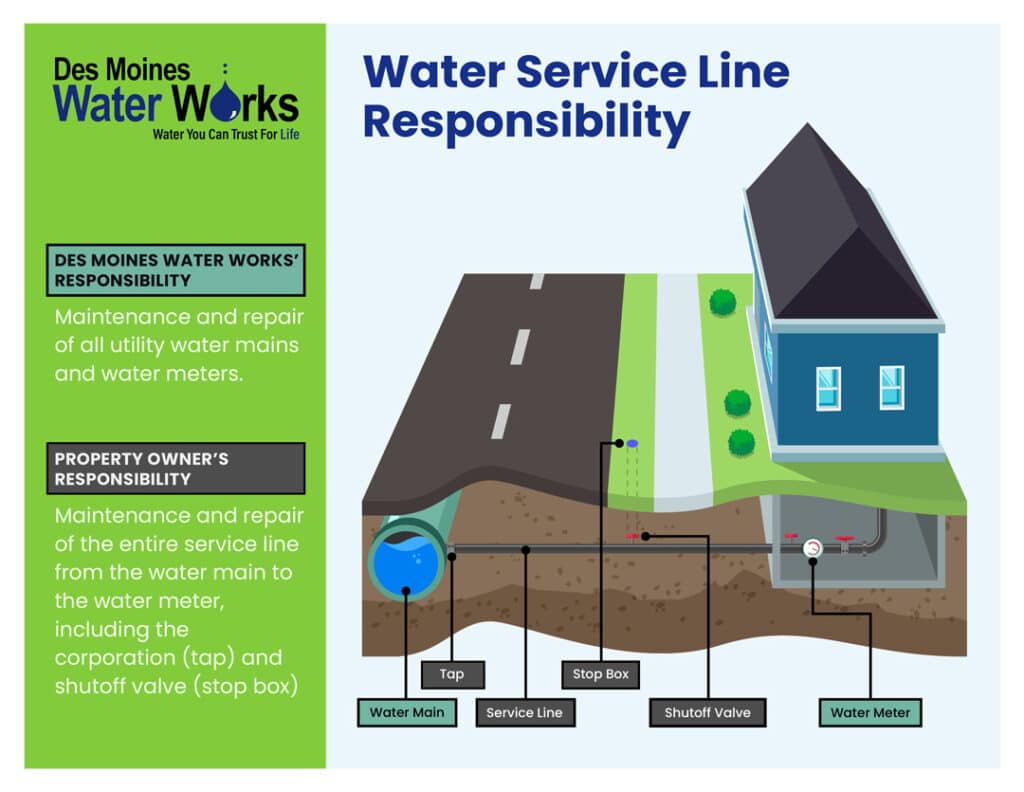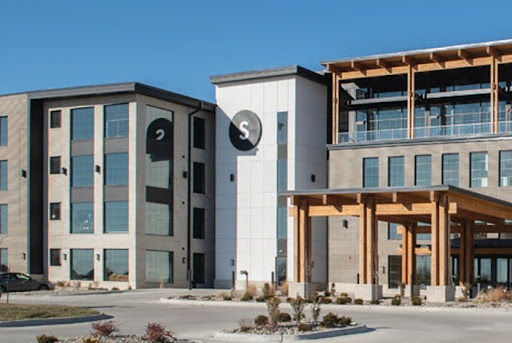Iowa water utilities $1 billion dilemma

Des Moines Water Works and other water utilities are stepping up efforts to find funds to help cover the $1 billion-plus estimated cost to replace more than 100,000 lead water service lines in Iowa.
Utility officials and others are asking Iowa lawmakers to allocate $5 million annually for 10 years from the state’s Rebuild Iowa Infrastructure Fund, a move that would help the state’s low-income homeowners leverage federal money to help pay to replace the lead service lines.
Officials also are urging lawmakers next session to pass legislation requiring homeowners to disclose the presence of lead water service pipes when a residential property is sold.
The federal Environmental Protection Agency this month unveiled final rules requiring public water utilities to identify and replace lead water service lines by 2037. Iowa is estimated to have over 100,000 lead service lines, 20,000 of which are in Des Moines. Replacing the lines in Des Moines is estimated to cost over $200 million; in Iowa, the replacement cost is estimated at over $1 billion.

“I don’t disagree that the [lead service lines] need to be replaced,” said Ted Corrigan, CEO and general manager of Des Moines Water Works. “Ten years is extraordinarily aggressive, especially from a resource perspective.”
In Des Moines, if money isn’t available to help the replacement cost of the lead service lines, the utility will likely have to raise water rates, Corrigan said. Rates could be 30% higher for the next 20 years if Water Works shoulders the entire $200 million replacement costs, he said.
Over time, the average Water Works customer could pay $3,000, or $2 more per 1,000 gallons of water used.
“We are working hard to avoid that,” Corrigan said. “But if the EPA says, ‘We don’t care that you don’t have the funding,’ that would be the result — a 30% rate increase for 20 years.”
No lead in Des Moines’ water
The EPA in 1986 banned the use of water lines made of lead, a toxic metal that can affect brain development in young children and kidney functions in adults. At the time, existing lead pipes were not required to be replaced in residences built before the ban took effect.
That stance was reversed in the mid-2010s when a change in Flint, Mich.’s water source caused lead supply lines to deteriorate, contaminating many residents’ drinking water.
Corrigan emphasized that Des Moines’ water is lead free. “We test continuously every minute of every day,” he said.
Des Moines uses a water treatment process that involves lime softening, Corrigan said. The process creates an eggshell-like coating on the inside of pipes and fixtures, protecting them from corrosion or lead leaching, he said.
“It used to be that if [the lead pipes] weren’t hurting anything, we’d leave well enough alone,” Corrigan said. The Flint crisis changed that opinion, he said. “Now the thinking is that while pipes may not be hurting anything now, they could in the future … and we should get rid of them.”

What are water service lines?
Water service lines are the one-half to one-inch underground pipes that carry water from a main into a residence or business. Between 1873 and 1940 in Des Moines, it was common to use lead pipes from the water main to the stop box, usually located near a sidewalk. The remainder of the line — from the stop box to the residence — was typically made of galvanized steel, Corrigan said.
After 1950, copper service lines replaced those made of lead, Corrigan said. Between 1940 and 1950, both copper and lead pipes were likely in use, he said.
Corrigan said Water Works officials are confident that residences built in Des Moines after 1950 don’t have lead service lines and those built before 1940 likely have them, unless they were replaced by property owners. What officials aren’t confident about is whether homes built between 1940 and 1950 have lead service lines.
In the past couple of years, the utility has sent letters to customers who may have lead water services lines, Corrigan said. Des Moines’ older neighborhoods — those surrounding downtown — are more likely to have a higher concentration of residences with lead service lines than those closer to the city’s boundaries.
More stringent requirements
In 1991, the EPA began requiring public water systems to use corrosion control treatments to minimize lead and copper in drinking water.
Revisions to that rule were made in 2021 and earlier this month, final revisions were released requiring public utilities to identify and replace all lead service pipes by 2037. The revised rule also requires more rigorous testing of drinking water and annual updates to utilities’ inventories of lead service lines.
The rules also place the responsibility of ensuring the service lines are replaced on the utility. In the Des Moines Water Works service area, the utility is responsible for maintaining and repairing water mains and meters. Property owners are responsible for maintaining and repairing service lines.
“Des Moines Water Works isn’t responsible for paying for anything that is privately owned,” which includes service lines, Corrigan said. But, he added, “most people have not been saving up money to replace their water service line.”
The water utility is working to find state and federal dollars to help pay for the replacement costs. If there isn’t enough money available, the utility will likely raise rates to offset costs.
The EPA, in announcing the new rules, also said that $37.4 million is available to Iowa through the federal infrastructure act. About half of the money must be spent in low-income areas, and those funds are not required to be repaid. The remainder of the funds must be repaid at some future date, according to the EPA.
Earlier this year, Rep. Zach Nunn, R-Iowa, and Rep. Emilia Sykes, D-Ohio, introduced legislation that would make all federal money for lead pipe replacement available in the form of forgivable loans or grants. The proposed legislation has not moved out of committee.
Corrigan and other utilities with lead service lines have been lobbying state officials to allocate money from the state’s Rebuild Iowa Infrastructure Fund to help pay the replacement costs in low-income neighborhoods. They also have suggested legislation to require disclosure of the presence of lead pipes when a property is sold.
“There’s a lot of things that have to be disclosed when you sell a home, and we think that ought to be one of them,” Corrigan said.
The water utility has applied for a $12.1 million partially repayable loan from the Iowa State Revolving Fund. The state has indicated the utility will receive the loan. The money will be used to replace 1,000 lead service lines in 2025 and 2026. Water Works has also applied for a second loan from the fund.
Impact on small communities
Several small Iowa communities with older housing stock likely have residences with lead water service lines.
One of the communities, Grinnell, has begun surveying residences and has found that at least 386 of the city’s 3,400 service lines contain lead, said Keagan Richmond, Grinnell’s water department director.
“It’s a pretty daunting task just to figure out what off the [service lines] are made of,” Richmond said. “It’s even more daunting to get them replaced.”
Grinnell has a plan to replace 370 service lines, pending approval of a request for grant money from a state agency, Richmond said.
Grinnell officials’ goal is to find ways to replace all of the lead service lines without raising water rates. But, he added, the city has other water projects in the works and “our capacity for borrowing money is not as great as it once was.”
Water rates in Grinnell will likely increase in the near future because of plans to install a new water treatment plant and water tower.
“And now this is coming,” he said. “We’re definitely on the lookout for any funding we can get so that we don’t have to pass on the [cost of replacing lead service lines] to our ratepayers.”
Grinnell is working with about a dozen other communities to persuade Iowa lawmakers to allocate more money to help pay for the replacement costs.
“In most cities around the state, the utility does not own the service lines, but making the ratepayers replace [lead pipes] is just not going to happen,” Richmond said. “The burden is going to fall on [utilities], and I think it’s our job to try and make sure that it all doesn’t trickle down to ratepayers as best we can.”
Pilot project
In 2023, Des Moines Water Works did a pilot project in Des Moines’ River Bend and King Irving neighborhoods in which it replaced 87 lead water service lines. The project cost $1 million, which came from the utility’s general fund. Ted Corrigan, CEO and general manager of Des Moines Water Works, said several things were learned from the project:
- Service lines between the stop box and home had previously been replaced at about half of the residences. That meant only the section of line between the main and stop box needed to be replaced, lowering the cost.
- Little work was needed inside homes.
- Communication is important. “People were skeptical that we were doing the work for free,” Corrigan said. “They also were concerned about whether their yard or basement were going to be messed up.”

Kathy A. Bolten
Kathy A. Bolten is a senior staff writer at Business Record. She covers real estate and development, workforce development, education, banking and finance, and housing.










